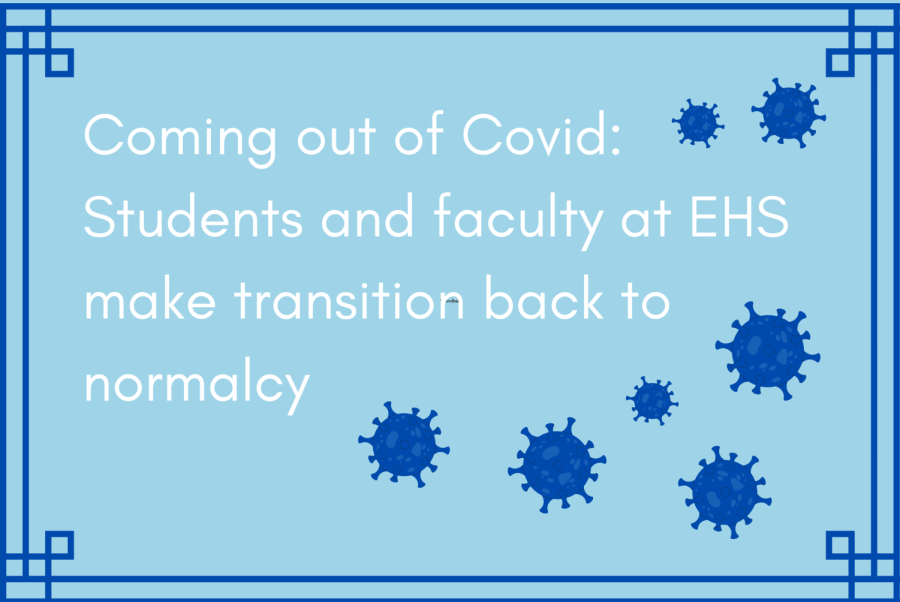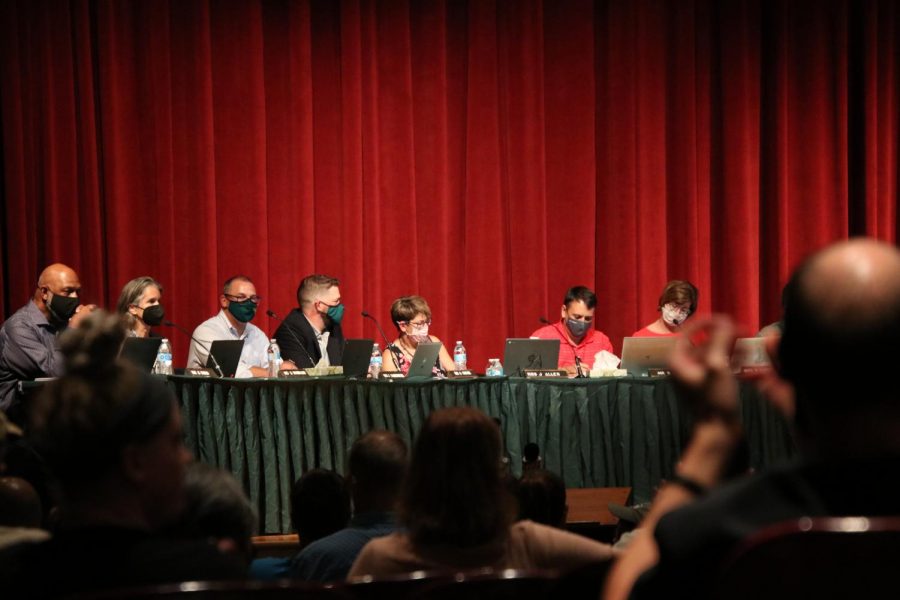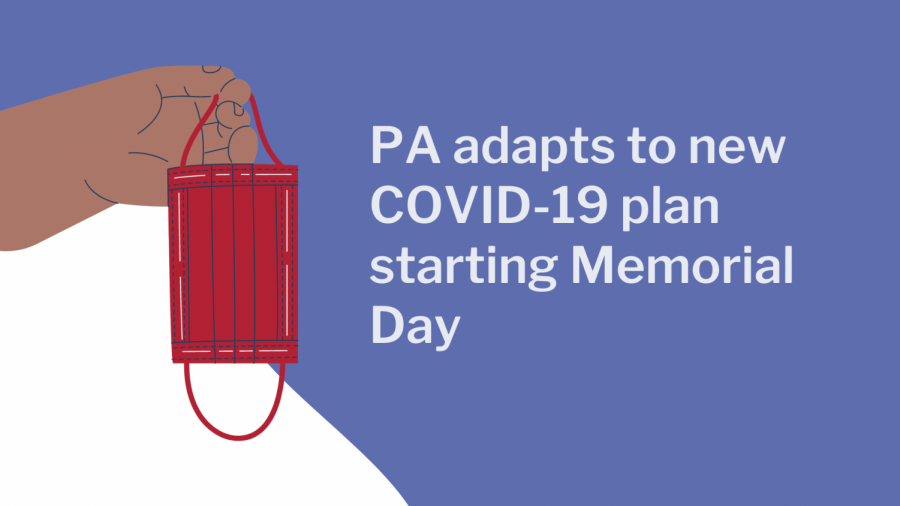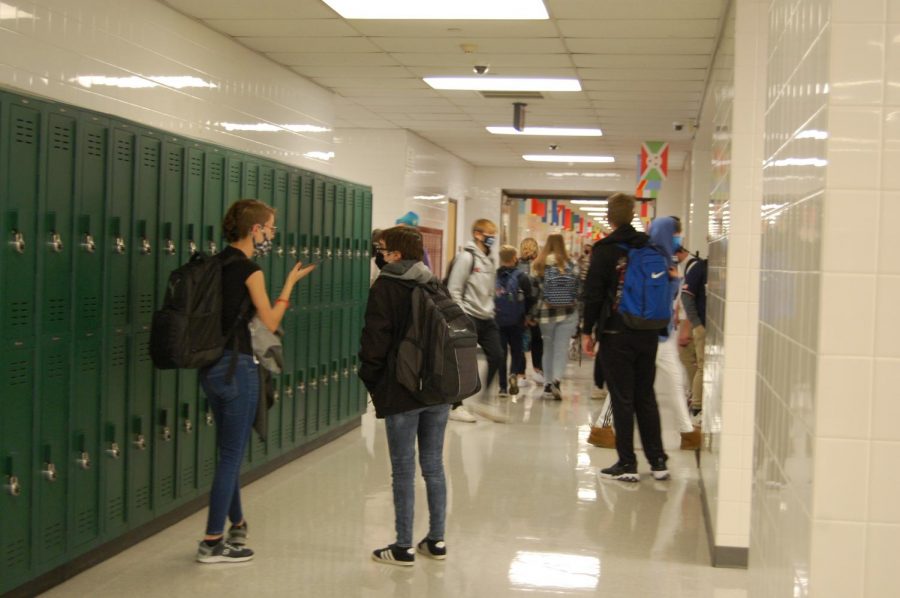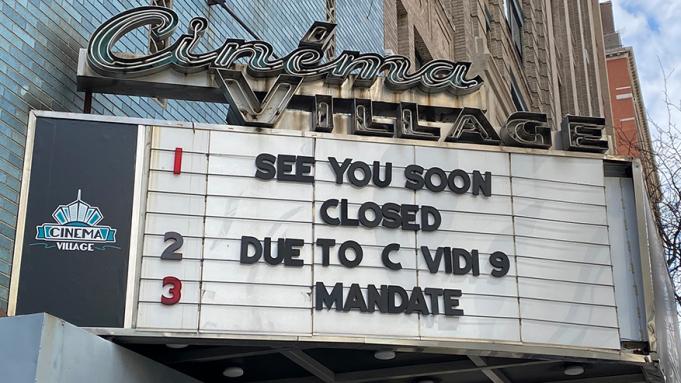This story ran in the November 2020 print issue of The Stinger.
During the pandemic, the East Penn arts and music programs have faced many challenges. However, with block scheduling and online tools such as Zoom, groups such as band, choir, orchestra, and theater hold out hope for performances.
Band directors such as Jen Sarro, who teaches at Lincoln, Willow Lane, and Wescosville elementary schools, find ways to continue to provide the best possible music education for passionate students.
Sarro said students are adjusting with a new approach.
With hybrid learning, students have their lessons in person every other week, using flipped instruction through the online tool See-Saw on off weeks and learning from home. With the program, students and teachers share videos back and forth, as a way for young musicians to stay engaged.
Just like traditional forms of education, different students learn in different ways, and have different needs, which are exemplified by the change brought by COVID-19.
Sarro sees variation in the success levels for students. For example, some are very adaptable, and able to work ahead without extra help. However, while some flourish, others who struggle with working independently, are inevitably “not going to get as much out of the experience,” Sarro said.
Vocal teacher Rita Cortez is trying to stay connected to her students and provide them with music education, as vocal groups cannot sing indoors.
Cortez emphasizes that a central part of her teaching revolves around the relationships formed in the vocal community.
“What is important in my program, it’s me in the room with those kids singing,” Cortez said. “It’s all about that and the relationship that I have with them and that they have with each other. And we haven’t been able to do that,” said Cortez.
The results of these difficulties are already present. Many elementary band students are experiencing difficulties in adjusting to independence and responsibility for the remote portions of their education. When it comes to on time submissions, dedication, and general motivation, several are falling behind.
For those who are struggling, there is often more than meets the eye. Although virtual education provides a safe environment during the pandemic, in the long run, it neglects the needs of those who need more hands on support in order to learn.
Understanding this, Sarro values the importance of having fun while learning. Instructors are now taking this uncertainty as an opportunity to focus more on the experience given to students through music. Learning to play an instrument can be fun, rewarding, and a great place to make memories, something that teachers are trying to continue to provide to students, despite obstacles.
However, there are also students who are taking full advantage of the ability to work at their own pace. Sarro spoke on the advantages that virtual solutions offer.
“If [the students] wanted to see me and work with me every day, they can. Which I think some students have absolutely taken advantage of, and those students who have they’re much further than I normally would see students get” said Sarro.
On a high school level, students involved in Symphonic Band are currently more disconnected from their curriculum. With the implementation of block scheduling, EHS students are facing more change than initially anticipated.
Senior Rowan Milne, a vocalist and instrumentalist who is a part of marching band, symphonic band, and chorale, finds engagement to be elusive.
“There’s still that disconnect,” said Milne. “With the marching band, it’s all about like working together and being together. And we just can’t safely do that and follow the guidelines,’ illustrating how the sense of community offered by such programs is taking a hit due to COVID. This made it especially difficult for her to fulfill her role as a section leader,
I’m trying my best as section leader to give them all the information that I can, and to give them the resources that they’ll need, but there’s only so much that I can do in contacting everyone,” Milne said.
Difficulties barring communication and gatherings keep new leaders such as Milne from carrying out responsibilities, and increase the pressure placed on students’ shoulders in adapting to changes.
As a member of symphonic band, marching band, and chorale, Milne expresses her frustration with changes to the music programs as both a sitting flute section leader, and a devoted member of the choir. One of the biggest concerns expressed by Milne was in respect to not only how little time there was during Marching Band Camp—a summer program that prepares students in marching band for drills, marches, and playing at games—but also regarding the lack of togetherness.
COVID forced the practices into smaller groups of people than usual, and posed a struggle for freshmen who are just beginning their journey in marching band.
“Especially with freshmen, you really want to, like, grab them in and make them feel welcome as possible so that they can get in the marching band right away and having been a freshman in marching band, it was hard enough not knowing anything or anyone,” Milne said.
With disarray due to the lack of in person contact, leaders like Milne are facing greater responsibilities in their roles.
“There’s still that disconnect, we can’t connect with each other because with the marching band, it’s all about working together and being together,” said Milne. “And we just can’t safely do that [while] following guidelines. So we have to find weird ways to get to know each other. [We’re] going to make it work, but [it] wouldn’t be our typical marching band.”
Most arts and music programs have been scheduled for the second semester, with little communication regarding what students should be doing in the meantime.
Sarro spoke on the student interactions before the pandemic and how they differ in a virtual environment.
“I joked with all of my students on See-Saw last year that I legitimately miss the ‘AHA’ moments, the ones where we worked on something forever and ever and ever, and then it finally just happens, and everyone is so excited,” said Sarro. “I get so excited for those little times where there are those triumphs, and we miss out on those little things. It’s not the same. And I honestly miss making music with everyone.”
This is true for the orchestra as well, as freshman cellist and field hockey player Emerson Henriquez admits a slight lack of motivation amidst optimism. Trying to make the best of the situation can be difficult when freshmen have never been exposed to the high school orchestra setting, and have little information or daily engagement.
“I’m trying to be positive,” said Henriquez. “Not really sure how it’s going to work with, like concerts and practice and stuff, especially with learning.”
However, despite the absence of a tangible orchestral community, music students have found a way to maintain contact and keep each other engaged and motivated outside of school, as friends in the music program often help in the form of solidarity through the shared struggle. Students like Emerson are finding their way through the change alongside friends who they usually play with during lessons.
This emphasis on adaptability has found its way into other programs such as theater as well, as the EHS Theater Department is implementing a new format for moving on with the annual fall play.
Set as a series of monologues from various plays throughout history, all woven together with narration, the play is completely virtual. Acting as a spotlight for individual actors to shine, the play is more inclusive than ever before. Rehearsals are conducted in 30 minute blocks for each student after school, where director Jill Kuebler coaches the students one on one, providing a level of individual engagement that is not always available with a traditional play. Additionally, this adaptation has also removed casting constraints, meaning that all those with passion and interest for theater were given the opportunity to grow and develop skills.
“I like to really be able to individualize this work and this process, and I think that a lot of the younger actors who don’t have a lot of experience with script analysis and really a lot of more in depth acting, they are getting more of an opportunity to focus on that” Kuebler said. Unlike band and orchestra which have faced difficulties involving and supporting freshmen, newcomers in theater have been given the most support and opportunity ever given to underclassmen, as “it’s not as much about the production, and it’s more about the acting.” With this fresh medium of monologues tied together to produce a continuous play, everyone is given an equal opportunity to display their skills.
Despite mixed feelings, there is an overwhelming sense of positivity within the arts community at EPSD. However, a lack of togetherness has an impact on instructors and students, as the arts center around expression, emotion, and empathy, emphasizing the relationships between students and teachers. Without the connection that is found in a typical art or music classroom, programs feel less personal. The human connection is missing.



